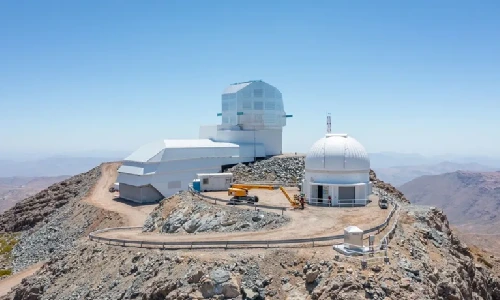Today, Vera C Rubin Observatory released its first spectacular images showing millions of Galaxies and Milky Way Stars and 1000’s of Asteroids in exquisite detail.
The first image revealed by the Vera Rubin telescope shows the Trifid and Lagoon nebulae in stunning detail. Vast colourful gas and dust clouds swirl in a star-forming region 9,000 light years away from Earth was captured in its 1st image which were fainted or invisible details with other observatories.

The imagery released today, took 10 hours of observations, which is a small preview of the Observatory’s upcoming 10-year scientific mission. This picture combines 678 separate images taken by the Vera C.
Vera C Rubin Observatory is a revolutionary telescope containing the largest digital 3200 megapixel camera ever built. It has the ability to peer into the dark depths of the Universe. It took almost 2 decades to build which now forms the heart of the observatory’s 8.4 m Simonyi Survey Telescope.
The observatory is named in the honour of the US astronomer Vera C. Rubin.

The observatory’s big goals is to understand the history of the Universe. It will examine 20 billion galaxies as well as produce the most detailed star map of the Milky Way, imaging 17 billion stars and cataloguing some six million small objects within our solar system including asteroids.
Vera C Rubin Observatory is funded by the National Science Foundation and the Department of Energy’s Office of Science.
The UK is a key partner in the survey and will host data centres to process the extremely detailed snapshots as the telescope sweeps the skies capturing everything in its path.

